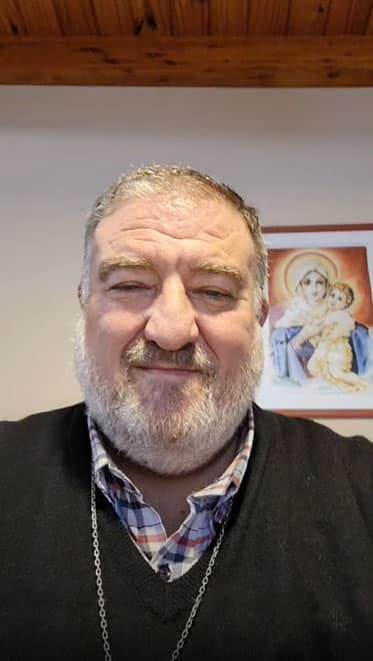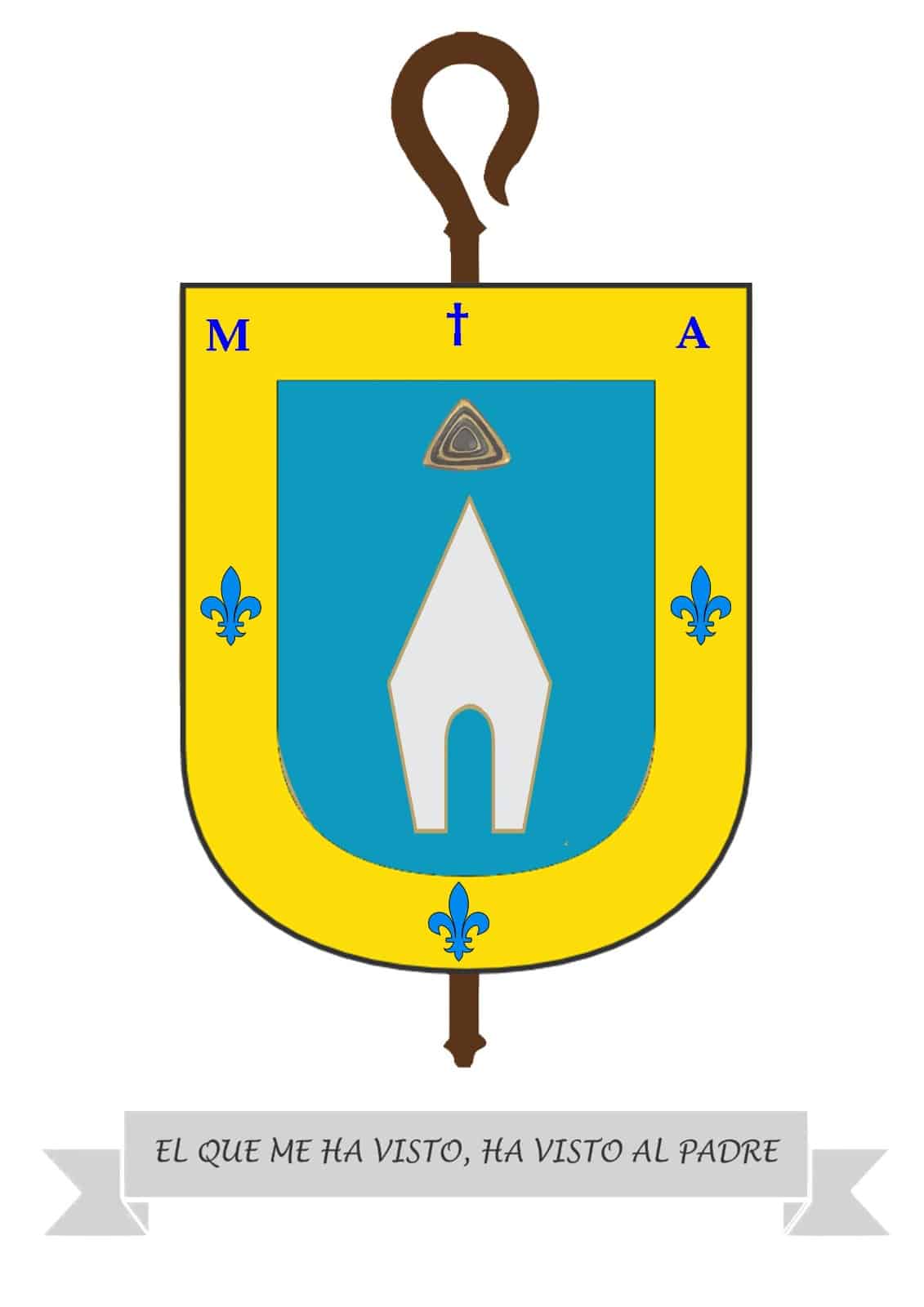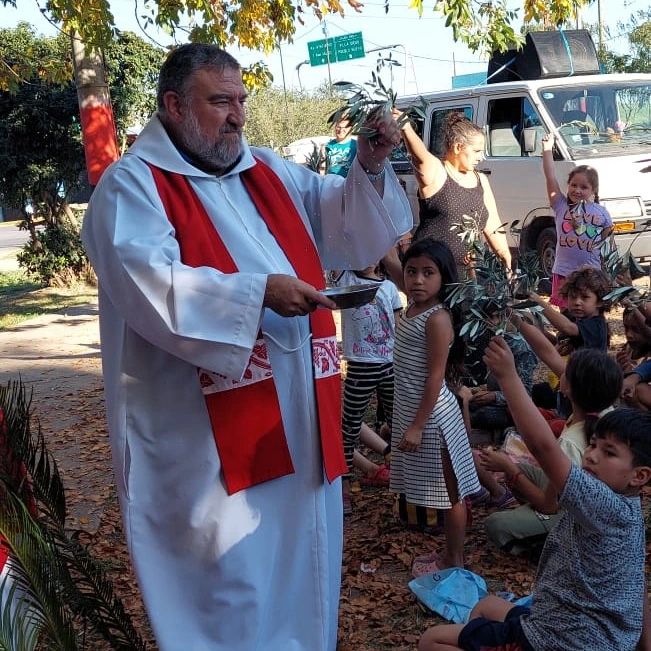On August 4th, on the feast of the Holy Curé of Ars, patron saint of priests, the episcopal ordination ceremony of Monsignor Ernesto José Fernández, an Argentinean priest belonging to the Schoenstatt Institute of Diocesan Priests, will take place.
Personal Profile
Father Fernández was born on March 19, 1966. He spent his childhood in Villa Constitución, a town near the city of Rosario, one of the most important cities in Argentina. He is the eldest of three brothers and those who knew him at that time describe him as an unruly and mischievous child. At an early age he entered the seminary where he attended the last years of elementary school and all of high school.
Since his adolescence he cultivated a very special bond with the Virgin Mary and that devotion led him to go to the Trinity Shrine in Rosario and to spend most of his life in the Schoenstatt Movement.
Schoenstatt in the heart of the Church

Last May 31st, Pope Francis appointed him as titular bishop of Worship and auxiliary of the Archdiocese of Rosario and this appointment came a few days before the 30th anniversary of the founding of his beloved Trinity Shrine. In a conversation with Schoenstatt International, Monsignor Fernandez explained how he received this appointment and what implications the Schoenstatt imprint will have in the exercise of his ministry.
What was it like for you to receive this appointment and what does it represent in your vocation?
I did not expect to receive this call. Quite the contrary. But priests know that when God calls (usually through human mediation) the best answer is Amen, which is most probably what the Virgin said when the angel told her she was going to be the Mother of the Savior. For me this call is an invitation to further develop my priestly fatherhood.
As a priest and now a Schoenstatt bishop, how does the Covenant of Love impact your mission in the Church?
For a Schoenstatter the Covenant of Love is the way of living baptism, trying to become holy in the fulfillment of one’s state duties. As a priest, and now as a bishop, I understand that the Blessed Mother must be the great protagonist in the pastoral mission that I will carry out. She was my Educator since I was a child. Now she will continue to do the same. But I also understand that being a diocesan priest will allow me to bring the charism of Schoenstatt to the heart of the Church. My appointment was made public on May 31st (in this we see the challenge of collaborating with the Blessed Mother so that organic thinking, living, and loving can become a reality). We know as Schoenstatters that Divine Providence also communicates its will to us through small signals. I believe that the Blessed Mother is asking me to carry out my entire episcopal ministry in this sense.
You were named bishop during a period of searching and deepening of ecclesial synodality. How does this affect your ministry?
I have been Vicar of Pastoral Ministry in the Archdiocese of Rosario for seven years. There I met Bishop Enrique Eguía Seguí, who was a collaborator of Cardinal Bergoglio. Thanks to him I got to know the pastoral work of Pope Francis (including the topic of synodality). Thus, when the topic was raised at a global level, we had already worked on it in the diocese.
Your coat of arms bears strong Schoenstatt elements: the Shrine, the MTA, the Father Symbol. Why did you choose these images to represent your episcopate?
In the center of the Episcopal coat of arms is the Schoenstatt Shrine and, above it, an “M”; a cross, which at the same time represents a “T” and an “A”. It recalls the title by which the Blessed Mother is named in the Schoenstatt Movement: “Mater Ter Admirabilis” (Mother Thrice Admirable).
I understand that in my ministry the Schoenstatt charism has a fundamental place. It recognizes the objective role of the Virgin Mary in the plan of redemption as a permanent collaborator of Christ and as a pedagogue of the Gospel. And the Shrine as an opportunity to heal the uprootedness characteristic of these changing times.
Above the Shrine is a triangle. In the Schoenstatt Movement it represents “The Eye of the Father”, and it is a symbol that reminds us that we should live, under the gaze of the Father, the “Practical Faith in his Divine Providence”, which is another of the pillars of our spirituality.
The fleur-de-lis also appears. In my case it reminds me of the lily, which is a symbol that accompanies the representations of St. Joseph. He is my personal patron since I was born on his feast day. And it is my desire to imitate his simple service to Jesus and Our Lady.
Can you explain the choice of your episcopal motto: “He who has seen me has seen the Father”?
The Episcopal motto is also shaped by Schoenstatt’s mission: to educate paternal personalities who make God transparent.
Pope Benedict XVI warns that “today’s man does not immediately perceive the great consolation of the word ‘father’, because many times the experience of the father is either lacking or is obscured by the deficiencies of their fathers”. St. Therese speaks clearly that she found in her father a transparency of God. My dream is that many may continue to experience the tenderness of God the Father through my episcopal ministry.

Ordination Ceremony
Monsignor Fernandez will receive his episcopal ordination on Friday, August 4th, at 7:00 p.m., in the parish of Maria Auxiliadora in the city of Rosario.
The consecration ceremony will be attended by Monsignor Eduardo Eliseo Martín, Archbishop of Rosario, Monsignor Sergio Alfredo Fenoy, Archbishop of Santa Fe de la Vera Cruz, and Monsignor Claudio Castricone, Auxiliary Bishop of Orán (Salta).
Members of the Schoenstatt Family will also attend, among them the Director of the Movement in Argentina, Father Pablo Pérez.
